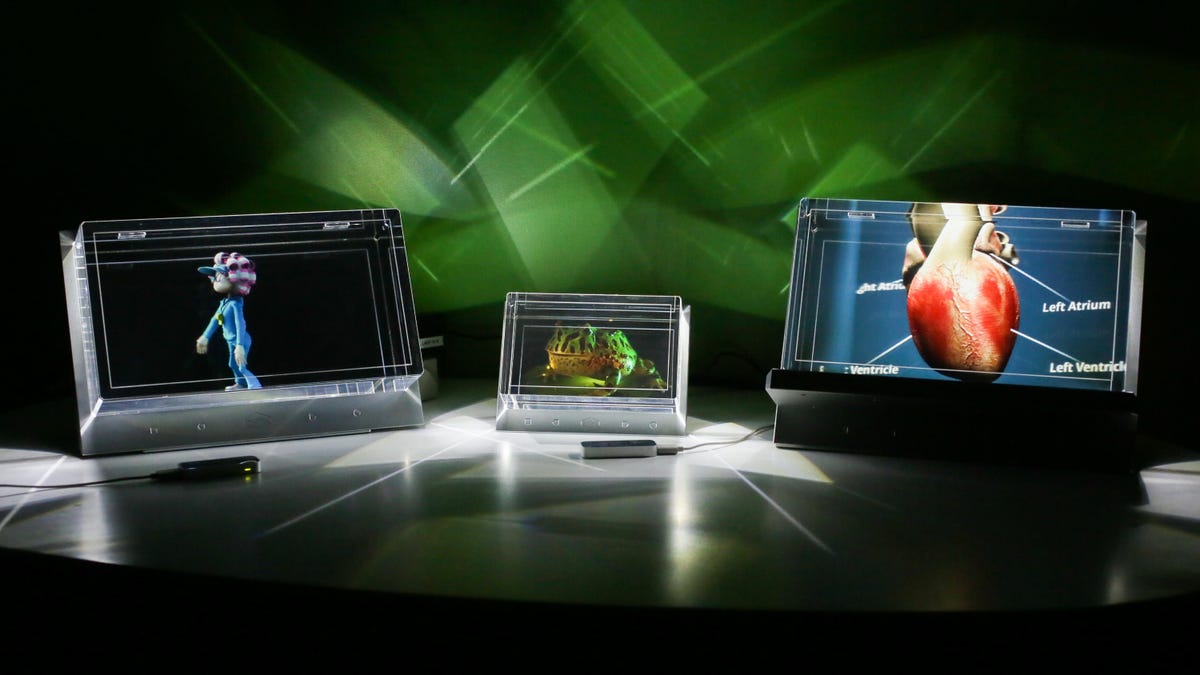Looking Glass Pro is a $6,000 holographic PC for conjuring 3D objects
If you've ever wanted to put virtual things in a magic box on your desk, this is your chance.

The teeth in the thick-walled glass box look like they're embedded, a 3D model in a cube. Walk closer, and you can see that this box is a display, and it's all pixels. The Looking Glass Pro feels like a magic box. But the box is actually a PC, and the whole system is meant to look at objects that can be conjured into space without needing VR goggles or glasses. Imagine a holographic workstation of the future, and maybe this is it.
The first Looking Glass lightfield display launched last year: the glasses-free 3D effect felt stunning, but needed to plugged into a PC. The new Looking Glass Pro is a full self-contained system that can be set up to access 3D files and interact with them, adding new touchscreen controls. It works with a mouse too, or via air gestures using a connected Leap Motion controller, and it has its own computer in the back with ports to boot.
Who would use something like this, exactly? Orthodontists, would you believe?
Shawn Frayne, the co-founder and CEO of the Brooklyn-based Looking Glass Factory, says the self-contained pro system was created to meet requests from businesses that wanted to install a 3D display system like this.
Examining a dental scan on the Looking Glass display.
OrthoScience, an orthodontics app, is one of the first big practical apps for Looking Glass. It's designed to look at 3D dental scans. I spin a scan of teeth around with my fingers, or use a mouse to move a cursor in 3D as it hugs the model and crawls around the jawline. A tap of my fingers can refocus the image on where I'm interested.
A flip-out second screen on the side of the Looking Glass Pro is intended as a control panel to bring up, say, multiple dental scans, or 3D models of other things. Maybe rare, soon-to-be-auctioned jewelry in a high-end showroom, Frayne suggests.
The 15.6-inch Looking Glass Pro display isn't as high-res as a regular monitor, but from a distance it captures a sense of reality that can be uncanny. A 3D recreation of James Bond 007's iconic pistol, displayed in the box, looks like a museum exhibit rather than a screen. (See Lori Grunin's 2018 story for a more detailed rundown of the Looking Glass display technology.)
The back, where all the ports are.
The Intel NUC 8 VR NUC8i7HVK inside the Looking Glass Pro is a type of tiny PC that's powerful and designed to run small wearable VR rigs. There's an HDMI port, two USB 3.0 ports, USB-C and an SD card slot in the back for expandability. The system can access OBJ, glTF and GLB 3D file formats, can connect to Unity and Unreal Engine via a HoloPlay 3D content SDK, and can look at lightfield photographs. It's intended to be a flexible 3D object toolbox.
Frayne also showed me a 360-degree video clip that could be viewed on the Looking Glass, suggesting that videos could be demoed on it. I found the 3D models a more compelling pitch, though. I look at a 3D model of a heart, spinning it in space through the display's thick glass. What if a Looking Glass display could be a quick way to conjure 3D files to look at before, maybe, 3D printing them? There's something instantly magical about the idea of a box that seems to make things appear.
The Looking Glass Pro is a pricey $6,000, which includes enterprise software licenses. Anyone considering getting one should seriously take a look at one in person first. But even though I'd like to see the images be crisper, and work better at all angles... I'm already impressed.

